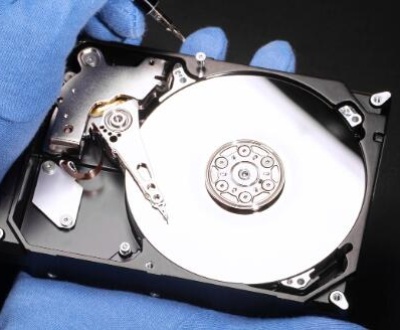Fortunately, there are various methods to recover lost Word documents, whether they were deleted accidentally, lost due to a system crash, or corrupted.
Before diving into recovery methods, it’s essential to understand the common causes of lost Word files:
Accidental Deletion: Unintentional deletion from the Word application or your file system.
File Corruption: Issues during saving or transferring files can render them unusable.
Software Crashes: Unexpected application or system crashes can result in lost unsaved documents.
Storage Device Issues: Problems with hard drives, USB drives, or SD cards can lead to inaccessible files.

Malware Attacks: Viruses or malware can corrupt or delete your files.
Tips for Preventing Future Data Loss
Before we explore recovery methods, consider implementing these practices to minimize the risk of losing your Word files in the future:
Regular Backups: Utilize cloud storage services or external drives for regular backups of important files.
Enable AutoSave: In Microsoft Word, ensure that AutoSave is activated to save changes automatically.
Use Version History: Take advantage of Word’s version history feature to restore previous versions of documents easily.
Methods for Recovering Lost Word Files
Method 1: Check the Recycle Bin
The first step in recovering lost Word files is to check your Recycle Bin, as deleted files may still be retrievable from there.
Open the Recycle Bin on your desktop.
Look for Your Word File: Browse through the items in the Recycle Bin to find your lost document.
Restore the File:
Right-click on the file you want to recover.
Select “Restore.” The file will return to its original location.
Method 2: Search for AutoRecover Files
Microsoft Word has an AutoRecover feature that saves temporary copies of your documents. Here’s how to find them:
Open Microsoft Word.
Go to the File Tab: Click on “File” in the upper left corner.
Select “Info”: Click on “Info” in the left sidebar.
Manage Document: Look for “Manage Document” and click on it.
Recover Unsaved Documents: Select “Recover Unsaved Documents” to open the AutoRecover folder.
Search for Your Document: If you find your document, click on it to open and save it.
Method 3: Use the Document Recovery Pane
If Word crashes or closes unexpectedly, it may display the Document Recovery pane the next time you open it. Here’s how to access it:
Open Microsoft Word: Launch the application after a crash.
Check the Document Recovery Pane: If available, the pane will appear on the left side.
Select Your Document: Click on the document you want to recover to open it.
Save the Document: After reviewing, save it immediately to your desired location.
Method 4: Search for Backups
If you have the backup feature enabled in Word, you may find a backup copy of your document. Here’s how to locate it:
Open the Folder where the original document was saved.
Look for Files with the .wbk Extension: Backup files often have this extension.
Open the Backup File: Double-click to open and review the contents.
Save the File: If it’s the correct document, save it with a new name to prevent confusion.
Method 5: Recover Previous Versions
Windows allows users to recover previous versions of files if File History is enabled. Here’s how to do it:
Navigate to the Folder: Go to the folder where the lost Word file was originally saved.
Right-Click on the Folder: Select “Properties” from the context menu.
Go to the Previous Versions Tab: Click on the “Previous Versions” tab.
Select a Version: Choose a version from the list and click “Restore” to recover it.
Method 6: Utilize Third-Party Recovery Software
If the above methods do not yield results, third-party data recovery software can help recover lost Word files. Here are some popular options:
Panda Assistant:
Panda Assistant is an advanced data recovery software designed to help users effortlessly retrieve lost or deleted files from various storage devices, including external hard drives, USB drives, and SD cards. With a user-friendly interface, it caters to both beginners and seasoned professionals, making data recovery accessible to everyone.
One of the standout features of Panda Assistant is its powerful scanning capabilities. The software employs advanced algorithms to perform deep scans, ensuring that even the most difficult-to-recover files are identified. Whether files were accidentally deleted, lost due to formatting, or corrupted during transfer, Panda Assistant provides a reliable solution for recovering valuable data.
In addition to its scanning prowess, Panda Assistant offers a preview function that allows users to view recoverable files before initiating the recovery process. This feature enables users to selectively recover only the files they need, thus saving time and storage space.
Compatibility is another strength of Panda Assistant, as it supports both Windows and Mac operating systems. This versatility allows users across different platforms to benefit from its data recovery capabilities. Regular updates and dedicated customer support further enhance the user experience, ensuring that help is readily available when needed.
Disk Drill:
Download Disk Drill: Install the software on your computer.
Scan for Lost Files: Choose the drive and initiate a scan.
Recover the Files: Review the results and recover the necessary files.
Method 7: Check Temporary Files
Word creates temporary files while you’re working on documents, which may still exist after a loss. Here’s how to find them:
Open File Explorer.
Type %temp% in the Address Bar: This will open the temporary files folder.
Look for Word Files: Search for files that start with “~” or have a .tmp extension.
Open and Save: If you find a relevant file, open it and save it as a Word document.
Method 8: Use the Microsoft Office Online Recovery Tool
If you’re using Microsoft Office 365. you can use the online recovery feature:
Log into your Microsoft Account.
Open OneDrive: Check if the lost document was saved in your OneDrive account.
Use Version History: Right-click on the file in OneDrive and select “Version History” to recover previous versions.
About us and this blog
Panda Assistant is built on the latest data recovery algorithms, ensuring that no file is too damaged, too lost, or too corrupted to be recovered.
Request a free quote
We believe that data recovery shouldn’t be a daunting task. That’s why we’ve designed Panda Assistant to be as easy to use as it is powerful. With a few clicks, you can initiate a scan, preview recoverable files, and restore your data all within a matter of minutes.
Subscribe to our newsletter!
More from our blog
See all postsRecent Posts
- Data recovery salt lake city utah 2025-04-18
- Data recovery sacramento 2025-04-18
- Data recovery miami 2025-04-18

 Try lt Free
Try lt Free Recovery success rate of up to
Recovery success rate of up to









